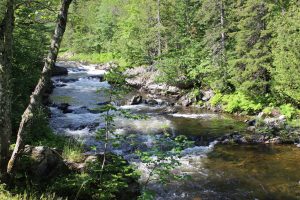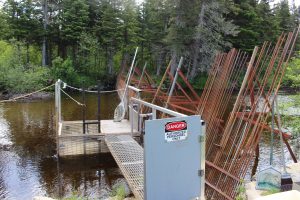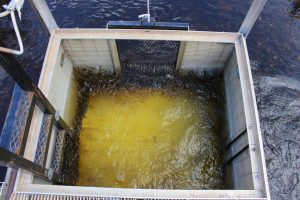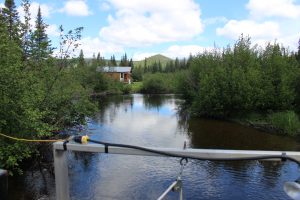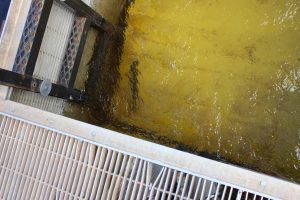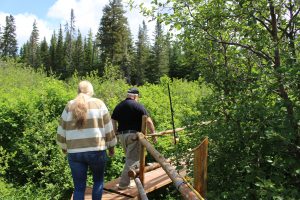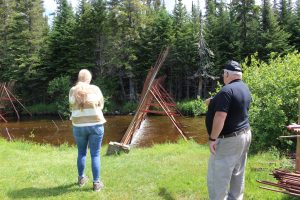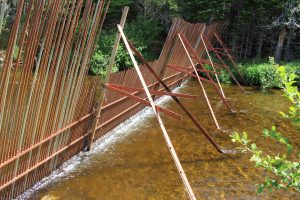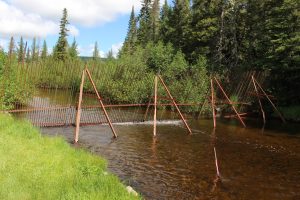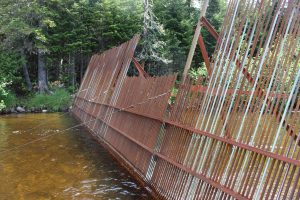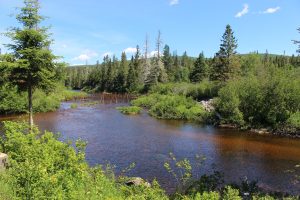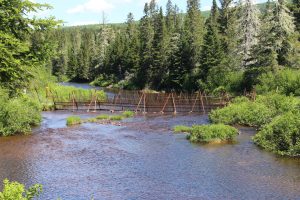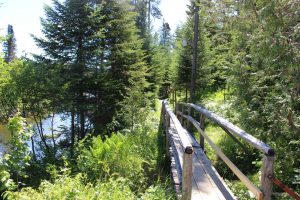The MSA has been a strong supporter of the salmon protection barriers on the Northwest Miramichi and Dungarvon Rivers that were operated by the Provincial Government through the Department of Natural Resources and Energy Development for over 30 years. In 2020, the MSA was contracted to manage these barriers.
The purpose of the barriers is to contain adult salmon in a small area where guardians can monitor and protect the salmon from illegal removals around the clock, until just before spawning time in the fall when they are released to continue their upstream migration to spawn, with increased protection from Provincial and Federal wardens.
When they were first constructed in the 1980’s, poaching was rampant in the headwater streams. The protection barriers ensured that adequate numbers of adult fish would survive to spawn. When adult salmon populations are low from other causes, the protection barriers ensure that those salmon that make it to the headwaters will not be removed by illegal means and protects critical spawning adults.
The MSA has fought to keep the barriers operational when governments planned to cease their operations over the years, as part of budget cuts, and when approached by the provincial government to operate the barriers under contract in 2020, the MSA agreed. The MSA hired 5 workers for each location from the existing employees and made changes to the schedule to ensure adequate protection. Not being able to use the previous DNRED radio communications, we provided each location with a satellite telephone and in 2021 changed that to internet service for each location with voice-over-internet service for cell phones which provides more security and benefits to staff. After the trial period in 2020 of operating the Northwest and Dungarvon barriers under contract, in 2021 MSA signed a 2-year contract with DNRED to operate the barriers for 2021 and 2022, with an option for 2023.
Operating in-stream structures has become more difficult with our changing climate. When we receive torrential rain, water levels increase quickly, bringing trees and other debris against the in-stream structures. We have been fortunate on the NW Miramichi barrier where extreme water levels have not washed away our containment structures, but we haven’t been as lucky at the Dungarvon barrier with two partial washouts in 2021. The fence material on the Dungarvon is higher than on the Northwest, so we will lower the height of the fence. This way, in the event of extreme high water, the water and debris will over-top the structure, relieving the pressure and keeping the fence intact. Fortunately, when this happens the fish generally do not move upstream but remain in slower areas close to shore and tend to move as the water is first rising or after it starts to drop. Other improvements will also be made at each facility to ensure that the salmon are protected.
We would like to thank the staff at both facilities, and especially the foremen Paul Norrad at the Dungarvon Barrier and Ed Stewart at the Northwest Barrier, for their dedication and hard work. Some of our employees have been working at these facilities for over 25 years and know the operations inside and out. The barriers are open for the public to visit during the day, but they are in remote locations and the roads may prevent low vehicles, such as cars, from accessing the sites.

